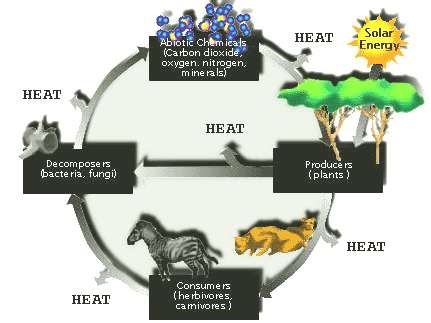EVERYTHING ALL ABOUT OF ALASKA REGION "The Land of the Midnight Sun"
INTRODUCTION
THE 49th STATE admitted to the union in U.S. history, Alaska is located northwest of the 48 contiguous states. It borders CANADA to the east, the PACIFIC OCEAN to the south, the Bering Sea to the west, and the ARCTIC OCEAN to the north. Alaska has several distinct physical regions. The southernmost region is named the Pacific Mountain System. The panhandle in the southeast mainly comprises the Alexander Archipalego, while south-central Alaska is made up of the Alaska Range, home to Mount MCKINLEY, or Denali, the highest point in North America at 20,320 ft (6,194 m). The coastal part of this region includes Prince William Sound and Cook Inlet. Lying southwest of the Alaska Range are the Alaska Peninsula and the ALEUTIAN ISLANDS. To the north of the Alaska Range, up to the Brooks Range, are low hill and valleys, or the Central Uplands and Lowlands.
HISTORY OF ALASKA REGION
Alaska contains more than 100 volcanoes and volcanic fields which have been active within the last two million years.
Alaska is the only state to have coastlines on three different seas: the Arctic Ocean, Pacific Ocean, and Bering Sea.
According to USGS, Alaska is 14.2% water with 94,743 square miles of water area in the state
There are more than 3,000 rivers and 3 million lakes in Alaska. Whether you like to kayak on peaceful waters or hit the rapids in a raft, Alaska has it al
Of the 20 highest peaks in the U.S., 17 are in Alaska.
Alaska is one of the most seismically active places in the world. The Alaska Earthquake Center has reported more than 150,000 earthquakes in the last five years, 31 of those had magnitudes of 6 or higher. Of the eight strongest earthquakes ever recorded in the world, three have occurred in Alaska.
ALASKAN OIL
In 1959, Alaska achieved statehood. In 1968, an arctic oil field was found at Prudhoe Bay, and three years later, the Alaska Native Claims Settlement Act was negotiated, which set up the creation of the trans-Alaska pipeline. The U.S. government gave 44 million acres (18 million hectares) and $962.5 million to the indigenous people. In return, the native Alaskans forfeited their rights to make aboriginal land claims. Thirteen regional and around 200 village corporations have thus invested in oil drilling and other Alaskan industries. All of the native Alaskans are individual shareholders in these companies. The pipeline from Prudhoe Bay to Valdez was constructed in the mid-1970s and resulted in incredible population increases to Fairbanks and Valdez. In the 2000s, oil money accounts for almost 80 percent of the state budget, and Alaska has become the United States’ largest oil-producing state. The money from the oil business has improved education, transportation, medical care, and communications. Overall, Alaska has the highest average household income in the country. However, the effects of oil production continues to be debated across the state, especially after the Exxon Valdez oil spill, which affected Prince William Sound in 1989. This catastrophic oil spill of 10 million gallons damaged the ecosystem throughout the polluted area. In the early 2000s, debate centered on whether oil drilling should be conducted in the Arctic National Wildlife Refuge in the remote northeast corner of Alaska.
ALASKAN AURORA BOREALIS
NORTHERN LIGHTS, or the aurora borealis, are shimmering lights that shine above the Earth near the geomagnetic North Pole. The lights, often bright enough to read by, are usually green or red. The phenomenon is caused when a solar storm discharges high-energy particles that are channeled into a ring by the Earth’s magnetic field. The solar particles energize atoms in the thin ionosphere, which cause emissions of light. The solar particles travel from the sun in a field called, at different stages, a plasma or solar wind. Because the solar wind and the magnetic field of the aurora borealis 61 Earth are constantly interacting, the northern lights may appear as an arc, a curtain, or an undulating sheet. When the electrons from the sun excite oxygen atoms, those atoms glow green. If they get extremely excited, red is the color produced. Blue and violet lights result from interaction with nitrogen radicals, a pink glow comes from neutral nitrogen, and excited hydrogen shows as blue and green. Each color glows at a particular altitude as well. Thus, the auroras can actually serve as a map of the composition of the ionosphere.
The aurora borealis usually glows from 50 to 100 mi (80 to 160 km) above the ground, but it can occur at lower altitudes and, on rare occasions, at ground level. Astronauts, the only persons who get to see the lights from above, have flown through auroras and report that even with eyes closed, they see flashes of light from the charged part.Astronomer Edmund Halley proposed in the early 18th century that the aurora lights were caused by Earth’s magnetism. Norwegian physicist Kristian Birkeland showed with models that electrons from the sun would bend toward the Earth’s magnetic poles and enter the ionosphere, where He decelerated and emitted light.A similar phenomenon occurs around the southern geomagnetic pole and is called the aurora australis.










1 Comments
Thanks for Valid Information
ReplyDelete